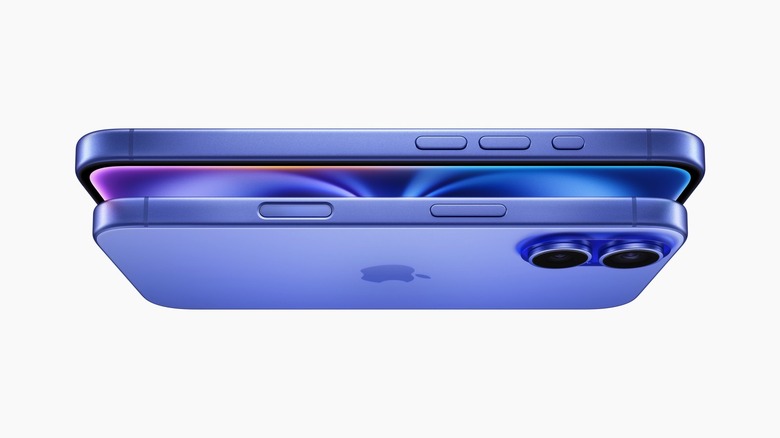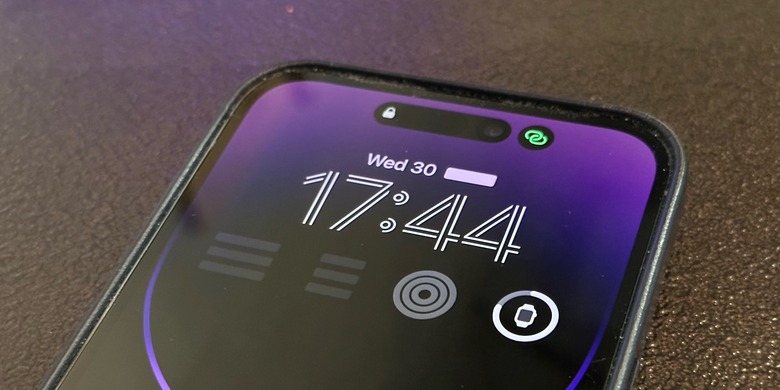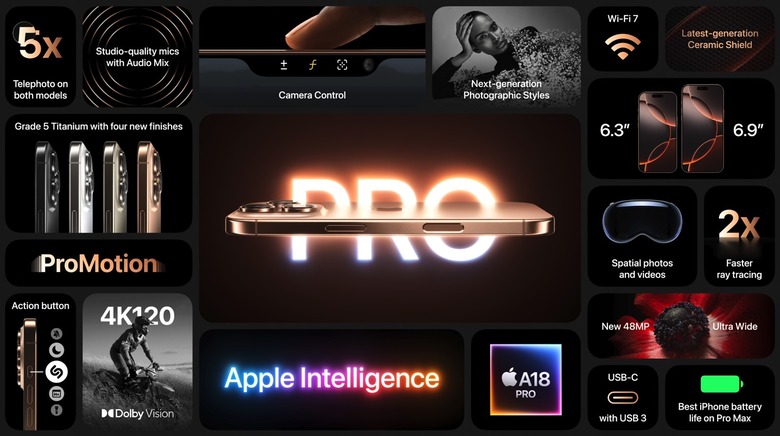There's An Easy Way To Make Your iPhone 16 Pro Battery Life So Much Better
The iPhone 16 series features a big battery boost over last year's models. At least, that's what Apple said during the launch event last week.
Apple also told us that it packed larger batteries inside the phones, though it didn't offer any specifics. Real-life tests will tell us exactly how good the iPhone 16 batteries are. Until then, we have Apple's official estimates for the iPhone 16 series, suggesting all four models offer battery life improvements over their iPhone 15 predecessors.
But Apple's estimates might also tell us that the iPhone 16 Pro and 16 Pro Max battery life could be much better if you turn off the Always-On display feature Apple introduced two years ago.
Always-On display tests
The first thing I did with the iPhone 14 Pro when I got it back in September 2022 was turn off the Always-On display. It was a signature feature for the iPhone 14 Pros, sure. I'm also convinced that many people love seeing information at a glance on the display. However, I just think it's overkill for my needs, where I'm always one Face ID authentication away from notifications and quick app access. Plus, who needs an Always-On display on their iPhone when they also use an Apple Watch?
I enjoyed great battery life from day one, with the iPhone 14 Pro routinely lasting more than a day. I was charging it every other day for the first year. The battery has aged since then, and battery life has degraded somewhat, especially after installing the iOS 18 beta. But my iPhone 14 Pro still holds up well, to the point where I'm certain I could use it for another year. Of note, my Always-On display is still disabled.
A few months after the iPhone 14 launched, some tests taught us exactly how much battery life the Always-On display functionality consumes. The iPhone 14 Pro used 16% of its battery to power the Always-On functionality for 24 hours. That's a lot of energy. The iPhone 14 Pro with the display turned off lost almost no battery life during the same period.
iPhone 16 battery life estimates
We already knew all that going into the iPhone 16 launch. Always-On display will consume extra energy on the iPhone 16 Pro and 16 Pro Max. How much energy? Well, Apple's own battery estimates for the four iPhone 16 models could help with that.
Apple doesn't list battery capacities on its website for iPhones. Instead, it offers estimates for three scenarios: video playback, video playback (streamed), and audio playback.
Here's the battery life for each of the four iPhone 16 models for those scenarios:
Video playback
- iPhone 16 Pro Max – 33 hours
- iPhone 16 Pro – 27 hours
- iPhone 16 Plus – 27 hours
- iPhone 16 – 22 hours
Video playback (streamed)
- iPhone 16 Pro Max – 29 hours
- iPhone 16 Pro – 22 hours
- iPhone 16 Plus – 24 hours
- iPhone 16 – 18 hours
Audio playback
- iPhone 16 Pro Max – 105 hours
- iPhone 16 Pro – 85 hours
- iPhone 16 Plus – 100 hours
- iPhone 16 – 80 hours
What's impressive here is that the 6.3-inch iPhone 16 Pro lasts as long as the 6.7-inch iPhone 16 Plus in video playback tests: 27 hours. The 16 Plus gets 2 extra hours of streamed video playback. You'd think the iPhone 16 Pro would then almost match the 16 Plus in audio playback tests when the display is turned off. That's not the case.
There's a 15-hour difference between the two. This is surprising, considering these two iPhones last just as long when streaming video. The screen isn't actually in use in audio playback tests, as in the video playback tests. The Plus has a bigger battery than the Pro, sure. The Pro would have a more efficient screen, but it shouldn't matter in audio playback tests.
How Apple tested battery life
The only thing left to question is the Always-On display functionality, which is unavailable on the Plus. Here's how Apple tested battery life for the audio playback scenario.
Testing conducted by Apple in July and August 2024 using preproduction iPhone 16, iPhone 16 Plus, iPhone 16 Pro, and iPhone 16 Pro Max units and software, subscribed to LTE and 5G carrier networks. The playlist consisted of 358 unique audio tracks purchased from the iTunes Store (256-Kbps AAC encoding), tested with stereo audio output. All settings were default except: Bluetooth was paired with headphones; Wi-Fi was associated with a network; the Wi-Fi feature Ask to Join Networks and Auto-Brightness were turned off. iPhone 16 Pro and iPhone 16 Pro Max were tested with Always-On display enabled but with the display not visible; audio playback time will decrease when Always-On display is visible, compared to playback time when the display is face down on a surface or in a pocket or bag.
Apple says it tested audio playback with the display not visible. That implies the screen was placed face-down on a surface. The Always-On display feature should not work in that scenario.
At the same time, Apple does say that audio playback will decrease when the Always-On display is visible. Real-life iPhone 16 battery tests might help explain why the Pro can't match the Plus in audio playback tests.
Regardless of Apple's estimates, turning off Always-On should improve battery life. And if the screen functionality is to blame for the lower audio playback estimate for the Pros, then I'd imagine the iPhone 16 Pro Max will last even longer than 105 hours with Always-On turned off.


